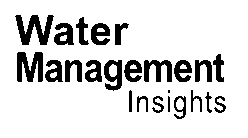In the bustling world of industrial waste management, a groundbreaking study has emerged from the Institute of Environmental Engineering and Research at the University of Engineering and Technology in Lahore, Pakistan. Led by Maryam Gull, this research delves into the intricate challenges posed by printing ink wastewater (PIW) and offers a promising solution that could revolutionize the way we handle this hazardous waste.
Printing ink wastewater is a complex concoction of toxic chemicals, including heavy metals like lead and chromium, volatile organic compounds (VOCs), resins, solvents, and synthetic dyes. If not properly treated, these pollutants can wreak havoc on both human health and the environment. “The improper handling of PIW can lead to severe health issues, including dermatitis, respiratory problems, organ damage, and even cancer,” Gull emphasizes. This stark warning underscores the urgent need for effective treatment methods.
The study, published in Cleaner Water (translated from Urdu as Pure Water), explores a hybrid treatment system that combines coagulation with adsorption, aiming to remove contaminants from real industrial wastewaters. The researchers tested two coagulants, polyferric sulfate (PFS) and polyaluminum chloride (PAC), followed by adsorption with powdered activated carbon (AC) and a cellulose microfiltration step. The results were striking: PAC outperformed PFS, achieving impressive removal rates of 98% for COD and TSS, 97% for BOD5, and 94% for TOC after 150 minutes of settling.
Gull’s findings suggest that PAC not only enhances floc formation but also improves the removal of both particulate and dissolved organic matter. This dual action makes PAC a potent tool in the arsenal against PIW pollution. “PAC has shown remarkable potential in enhancing the overall treatment efficiency,” Gull notes, highlighting the coagulant’s ability to tackle a wide range of pollutants.
The implications for the energy sector are significant. Efficient wastewater treatment can lead to substantial cost savings and reduced environmental impact, making industrial operations more sustainable and compliant with regulatory standards. The study’s focus on continuous-flow systems indicates a promising avenue for large-scale implementation, which could be a game-changer for industries grappling with PIW management.
Looking ahead, Gull recommends further research into the reusability of the adsorbent, cost-benefit analyses, and the development of efficient large-scale implementation methods. These steps could pave the way for widespread adoption of the hybrid treatment system, transforming the landscape of industrial wastewater management.
As the energy sector continues to evolve, the need for innovative solutions to environmental challenges becomes ever more pressing. Gull’s research offers a beacon of hope, demonstrating that with the right technology and approach, we can turn the tide on industrial pollution and create a cleaner, safer future.
